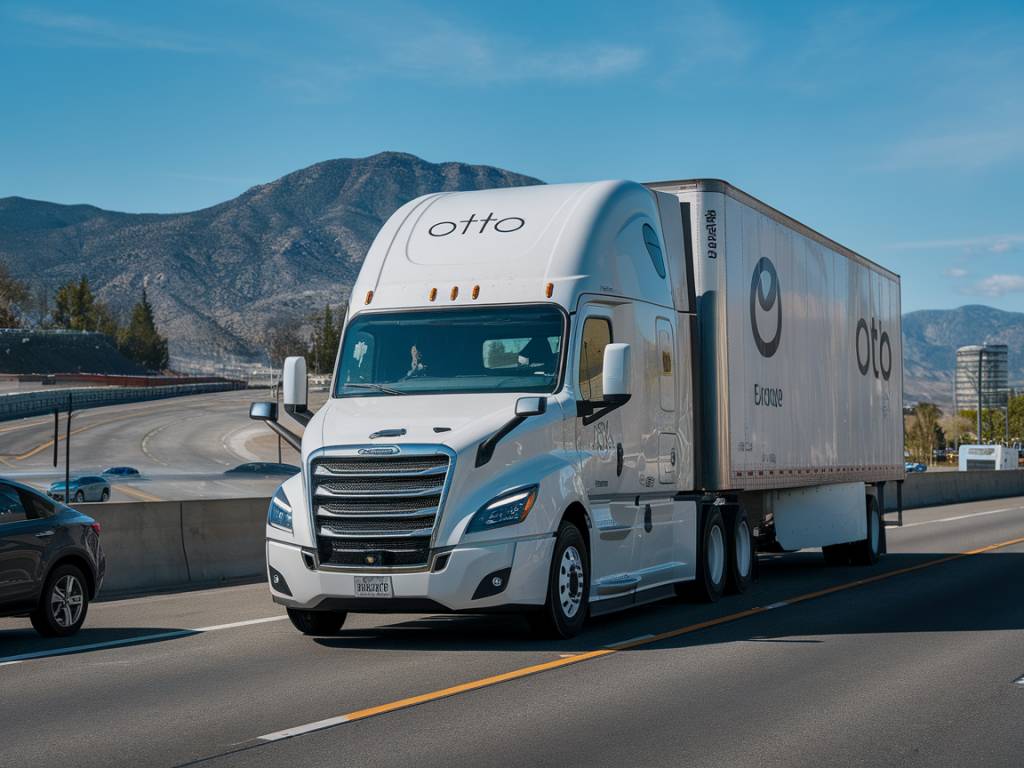Introduction to Autonomous Vehicles in Freight Transport
Autonomous vehicles, also known as self-driving vehicles, represent a revolutionary advancement in the logistics and transportation industry. These cutting-edge technologies have the potential to reshape the way goods are transported, promising increased efficiency, reduced operational costs, and enhanced safety. As the industry evolves, understanding the implications and benefits of autonomous vehicles in freight transport is essential for businesses and policymakers alike.
The Technological Backbone of Autonomous Freight Vehicles
At the core of autonomous vehicles are advanced technologies that enable them to navigate and operate without human intervention. Key components include:
- Sensors and Cameras: These devices gather real-time data about the vehicle’s surroundings, including other vehicles, pedestrians, and road conditions.
- Machine Learning Algorithms: AI-powered algorithms process the data collected by sensors to make real-time decisions, such as route optimization and obstacle avoidance.
- LiDAR and RADAR: These systems provide precise measurements of the vehicle’s environment, crucial for safe navigation and collision avoidance.
- GPS and Mapping Software: Accurate positioning and navigation systems ensure the vehicle follows the most efficient routes, adapting to traffic conditions and road closures.
Benefits of Autonomous Vehicles in Freight Transport
The integration of autonomous vehicles in freight transport offers several significant advantages:
- Increased Efficiency: Autonomous trucks can operate 24/7 without the need for rest breaks, leading to faster delivery times and higher productivity.
- Cost Reduction: By eliminating the need for human drivers, companies can reduce labor costs and mitigate risks associated with driver shortages.
- Enhanced Safety: Autonomous vehicles reduce the risk of accidents caused by human error, such as fatigue or distraction, contributing to safer roads.
- Environmental Benefits: Optimized driving patterns and reduced idle times contribute to lower fuel consumption and reduced carbon emissions.
- Supply Chain Optimization: Autonomous vehicles can seamlessly integrate with other automated systems, improving overall supply chain efficiency and coordination.
Challenges and Considerations for Implementation
Despite the promising benefits, the widespread adoption of autonomous vehicles in freight transport presents several challenges:
- Regulatory and Legal Issues: Developing comprehensive regulations and standards for autonomous vehicles is essential to ensure safety and liability concerns are addressed.
- Public Acceptance: Garnering public trust in autonomous technology is crucial for its acceptance. This involves extensive testing, transparent communication, and proven safety records.
- Infrastructure Upgrades: Existing road infrastructure may require significant upgrades, such as smart traffic signals and dedicated lanes for autonomous vehicles.
- Cybersecurity Concerns: Protecting autonomous vehicles from potential cyber-attacks is vital to ensure the safety and integrity of the transportation network.
- High Initial Costs: The initial investment in autonomous technology, including research, development, and deployment, can be substantial for companies.
Current Developments and Real-World Applications
Several companies and projects are pioneering the use of autonomous vehicles in freight transport:
- Waymo: A leader in autonomous driving technology, Waymo has been testing self-driving trucks for freight delivery in various locations across the United States.
- TuSimple: This autonomous trucking company has been successfully operating self-driving trucks in Arizona and Texas, focusing on long-haul routes.
- Embark: Embark is developing autonomous technology specifically for trucking, aiming to improve efficiency in the freight industry.
- Einride: A Swedish company, Einride, has introduced electric autonomous trucks, combining environmental benefits with advanced self-driving capabilities.
Impact on the Workforce
The introduction of autonomous vehicles in freight transport raises important questions about the future of jobs in the trucking industry. While there is a potential reduction in the demand for human drivers, new opportunities may arise in areas such as:
- Technology Maintenance and Support: Skilled technicians will be needed to maintain and repair autonomous vehicles and their complex systems.
- Data Analysis: Experts in data analysis will be crucial for optimizing routes, improving efficiency, and analyzing performance metrics of autonomous fleets.
- Regulatory Compliance: Professionals will be required to navigate the evolving regulatory landscape and ensure compliance with new standards.
- Customer Service: As logistics companies enhance their services with autonomous technology, customer service roles may focus on managing client relationships and addressing concerns regarding automated deliveries.
Future Outlook for Autonomous Freight Transport
The future of autonomous vehicles in freight transport is promising, with ongoing advancements in technology and increasing interest from major industry players. Key trends to watch in the coming years include:
- Technological Advancements: Continued innovation in sensors, AI algorithms, and vehicle-to-infrastructure communication will enhance the capabilities and safety of autonomous vehicles.
- Regulatory Progress: Governments around the world are working on developing comprehensive regulatory frameworks to support the integration of autonomous vehicles in public and commercial transport.
- Collaborations and Partnerships: Collaborations between technology companies, logistics providers, and regulatory bodies will drive the successful implementation and scaling of autonomous freight solutions.
- Increased Adoption: As technology matures and regulatory barriers are addressed, more companies are expected to adopt autonomous vehicles, leading to widespread industry transformation.
In summary, autonomous vehicles hold the potential to revolutionize the freight transport industry. With significant benefits in efficiency, cost savings, and safety, they represent a transformative technology that will shape the future of logistics and supply chain management. However, careful consideration of the challenges and strategic planning will be essential to unlock their full potential and ensure a smooth transition.



